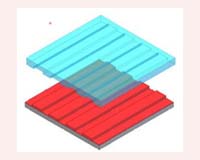 |
Blacksburg, Va. (UPI) Jul 14, 2009 Three U.S. professors have co-invented a remote process for filling hollow carbon molecules called fullerenes with radioactive metals. Virginia Polytechnic Institute Professor Harry Dorn, Emory University and Henry College Professor James Duchamp and Virginia Commonwealth University School of Medicine Professor Panos Fatouros are the co-inventors of the process that can fill fullerenes with atoms of various metals. Dorn said an important example of the use of the process is a fullerene encasing a sensitive contrast agent (gadolinium) for magnetic resonance imaging applications, including acting as a diagnostic and therapeutic agent for brain tumors. Dorn and Fatouros have funding from the National Cancer Institute to further develop, produce, and test fullerene nanoparticles that can identify brain tumor cells and selectively target them for radiation therapy. Dorn and Duchamp invented a generator that makes the new material by remote control, with the process managed remotely. More information about the processes is available at www.vtnews.vt.edu/story.php?relyear=2005&itemno=1062. Share This Article With Planet Earth
Related Links Nano Technology News From SpaceMart.com Computer Chip Architecture, Technology and Manufacture
 New Technique Shrinks Size Of Nanotechnology Circuitry
New Technique Shrinks Size Of Nanotechnology CircuitryBoulder CO (SPX) Apr 20, 2009 A University of Colorado at Boulder team has developed a new method of shrinking the size of circuitry used in nanotechnology devices like computer chips and solar cells by using two separate colors of light. Like current methods in the nanoengineering field, one color of light inscribes a pattern on a substrate, said CU-Boulder Assistant Professor Robert McLeod of the electrical, computer ... read more |
|
| The content herein, unless otherwise known to be public domain, are Copyright 1995-2009 - SpaceDaily. AFP and UPI Wire Stories are copyright Agence France-Presse and United Press International. ESA Portal Reports are copyright European Space Agency. All NASA sourced material is public domain. Additional copyrights may apply in whole or part to other bona fide parties. Advertising does not imply endorsement,agreement or approval of any opinions, statements or information provided by SpaceDaily on any Web page published or hosted by SpaceDaily. Privacy Statement |